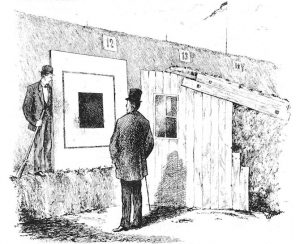You are here: Home > Marksmanship > The Creedmoor Era
Written by: David Minshall
On 20 November 1873 the ‘New York Herald’ published a letter from Arthur B. Leech, founder of the Irish Rifle Association, with a challenge to the riflemen of America from the riflemen of Ireland for a long range competition.
Although not addressed directly to them, the fledgling National Rifle Association (NRA) in America obviously became aware of the challenge, but was not keen to accept. It was the Amateur Rifle Club of New York City that came to the rescue. At their first Annual Meeting on 5 December 1873, the Executive Committee resolved that if satisfactory conditions could be arranged, they would “accept the challenge in the name of the Amateur Rifle Club of the City of New York, and of the Riflemen of America.”
George W. Wingate, President of the Amateur Rifle Club and Secretary of the NRA, addressed a letter to Arthur Leech on 20 December, confirming the Amateur Rifle Club’s resolution. The Irish challenge however, had been for a match to be fired at 800, 900, 1,000, and 1,100 yards. The NRA range at Creedmoor was limited to 1,000 yards – so the longest distance had to be declined.
On 16 January 1874, Arthur Leech replied to George Wingate, acknowledging the letter of the 20th and confirming that a formal programme of the proposed International Rifle Match would be prepared and submitted for approval. Leech apologised for not being aware of the NRA and not having addressed the challenge to them in the first instance. He also observed that waiving the 1,100 yards range would “detract somewhat from the great interest of the match.”

So, the ground was laid for the first great International Rifle Match between Irish and American riflemen.
[Image: The Targets (The Daily Graphic (New York), 21 June 1873). That illustrated is the target used at Creedmoor for 300 to 600 yards, and measured 6 foot square, with a 4 foot centre and 2 foot bull’s-eye.]